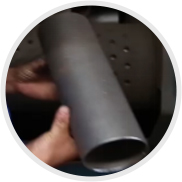 Afrikaans
Afrikaans  Albanian
Albanian  Amharic
Amharic  Arabic
Arabic  Armenian
Armenian  Azerbaijani
Azerbaijani  Basque
Basque  Belarusian
Belarusian  Bengali
Bengali  Bosnian
Bosnian  Bulgarian
Bulgarian  Catalan
Catalan  Cebuano
Cebuano  Corsican
Corsican  Croatian
Croatian  Czech
Czech  Danish
Danish  Dutch
Dutch  English
English  Esperanto
Esperanto  Estonian
Estonian  Finnish
Finnish  French
French  Frisian
Frisian  Galician
Galician  Georgian
Georgian  German
German  Greek
Greek  Gujarati
Gujarati  Haitian Creole
Haitian Creole  hausa
hausa  hawaiian
hawaiian  Hebrew
Hebrew  Hindi
Hindi  Miao
Miao  Hungarian
Hungarian  Icelandic
Icelandic  igbo
igbo  Indonesian
Indonesian  irish
irish  Italian
Italian  Japanese
Japanese  Javanese
Javanese  Kannada
Kannada  kazakh
kazakh  Khmer
Khmer  Rwandese
Rwandese  Korean
Korean  Kurdish
Kurdish  Kyrgyz
Kyrgyz  Lao
Lao  Latin
Latin  Latvian
Latvian  Lithuanian
Lithuanian  Luxembourgish
Luxembourgish  Macedonian
Macedonian  Malgashi
Malgashi  Malay
Malay  Malayalam
Malayalam  Maltese
Maltese  Maori
Maori  Marathi
Marathi  Mongolian
Mongolian  Myanmar
Myanmar  Nepali
Nepali  Norwegian
Norwegian  Norwegian
Norwegian  Occitan
Occitan  Pashto
Pashto  Persian
Persian  Polish
Polish  Portuguese
Portuguese  Punjabi
Punjabi  Romanian
Romanian  Russian
Russian  Samoan
Samoan  Scottish Gaelic
Scottish Gaelic  Serbian
Serbian  Sesotho
Sesotho  Shona
Shona  Sindhi
Sindhi  Sinhala
Sinhala  Slovak
Slovak  Slovenian
Slovenian  Somali
Somali  Spanish
Spanish  Sundanese
Sundanese  Swahili
Swahili  Swedish
Swedish  Tagalog
Tagalog  Tajik
Tajik  Tamil
Tamil  Tatar
Tatar  Telugu
Telugu  Thai
Thai  Turkish
Turkish  Turkmen
Turkmen  Ukrainian
Ukrainian  Urdu
Urdu  Uighur
Uighur  Uzbek
Uzbek  Vietnamese
Vietnamese  Welsh
Welsh  Bantu
Bantu  Yiddish
Yiddish  Yoruba
Yoruba  Zulu
Zulu Understanding the Functionality of Conveyor Tail Drums in Material Handling Systems
Understanding the Conveyor Tail Drum A Vital Component in Material Handling Systems
Conveyor systems play a crucial role in various industries, including manufacturing, mining, and logistics. Among the critical components that ensure these systems function efficiently is the conveyor tail drum. This article will delve into the purpose, design, maintenance, and significance of the conveyor tail drum in material handling operations.
What is a Conveyor Tail Drum?
The conveyor tail drum, also known as the tail pulley, is a cylindrical component located at the end of a conveyor belt system. It serves multiple purposes, from facilitating the movement of the belt to providing tension, support, and turning mechanics for the belt during operation. Typically, the tail drum is constructed from robust materials such as steel or rubber, designed to withstand heavy loads and harsh operating conditions.
Functions of the Conveyor Tail Drum
1. Support and Structural Integrity The tail drum supports the conveyor belt, ensuring it maintains proper alignment and operates smoothly. By providing sufficient support at the belt's endpoint, the tail drum helps prevent sagging or misalignment, which can lead to inefficiencies or even damage to the system.
2. Belt Tensioning One of the primary functions of the tail drum is to help maintain the correct tension in the conveyor belt. Proper tension is essential for optimal performance, as it ensures that the belt does not slip or become loose. A well-tensioned belt allows for efficient transfer of material, reducing wear on both the belt and the associated components.
3. Belt Direction Change In many conveyor systems, the tail drum works in conjunction with the head drum (the drum at the opposite end of the conveyor) to facilitate changes in the belt's direction. When the belt wraps around the tail drum, it can reverse direction, allowing materials to be moved efficiently to different locations.
4. Material Discharge The tail drum can also play a role in material discharge, especially in systems where the belt needs to release its load at the end of its path. The drum's rotation helps in evenly distributing materials and ensuring a smooth flow from the belt onto the desired surface.
Design Considerations
The design of a conveyor tail drum is critical for its functionality and durability
. When designing a tail drum, several factors must be consideredconveyor tail drum

- Diameter and Width The size of the drum affects its capacity to handle various materials. A larger diameter drum typically provides a gentler wrap of the conveyor belt, which can minimize wear and tear.
- Material Selection The choice of materials for the drum construction is pivotal. High-strength steel or composite materials are often preferred due to their ability to withstand heavy loads and resist corrosion.
- Bearing Configurations Depending on the application, different bearing configurations may be necessary for the tail drum. Proper bearing selection can lead to smoother operations and reduced maintenance needs.
Maintenance Best Practices
To ensure the longevity and efficiency of the conveyor tail drum, regular maintenance is essential. Here are some best practices
1. Regular Inspections Routine checks can identify wear and potential failures before they escalate. Look for signs of misalignment, unusual noises, or wear on the drum surface.
2. Lubrication Adequate lubrication of bearings is vital to minimize friction and wear. Establish a lubrication schedule tailored to the operational demands of the conveyor system.
3. Cleaning Keep the tail drum free from debris and material buildup, as this can cause premature wear or interference with the belt operation.
4. Belt Alignment Checks Regularly check and adjust the conveyor belt to ensure proper alignment, preventing undue stress on the tail drum and enhancing overall system performance.
Conclusion
In summary, the conveyor tail drum is an indispensable element in the material handling process. Its role in supporting the belt, maintaining tension, facilitating direction changes, and helping with material discharge is crucial for the efficient operation of conveyor systems. By understanding its functions, design considerations, and maintenance requirements, industries can optimize their material handling processes and enhance productivity.
-
Revolutionizing Conveyor Reliability with Advanced Rubber Lagging PulleysNewsJul.22,2025
-
Powering Precision and Durability with Expert Manufacturers of Conveyor ComponentsNewsJul.22,2025
-
Optimizing Conveyor Systems with Advanced Conveyor AccessoriesNewsJul.22,2025
-
Maximize Conveyor Efficiency with Quality Conveyor Idler PulleysNewsJul.22,2025
-
Future-Proof Your Conveyor System with High-Performance Polyurethane RollerNewsJul.22,2025
-
Driving Efficiency Forward with Quality Idlers and RollersNewsJul.22,2025





























